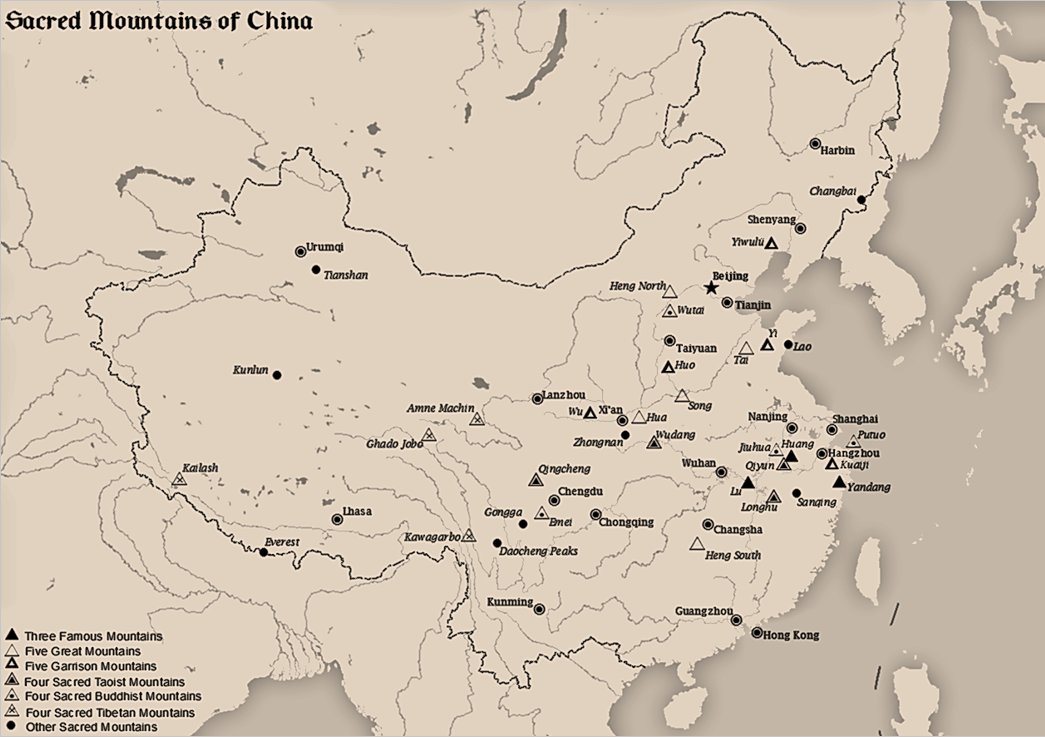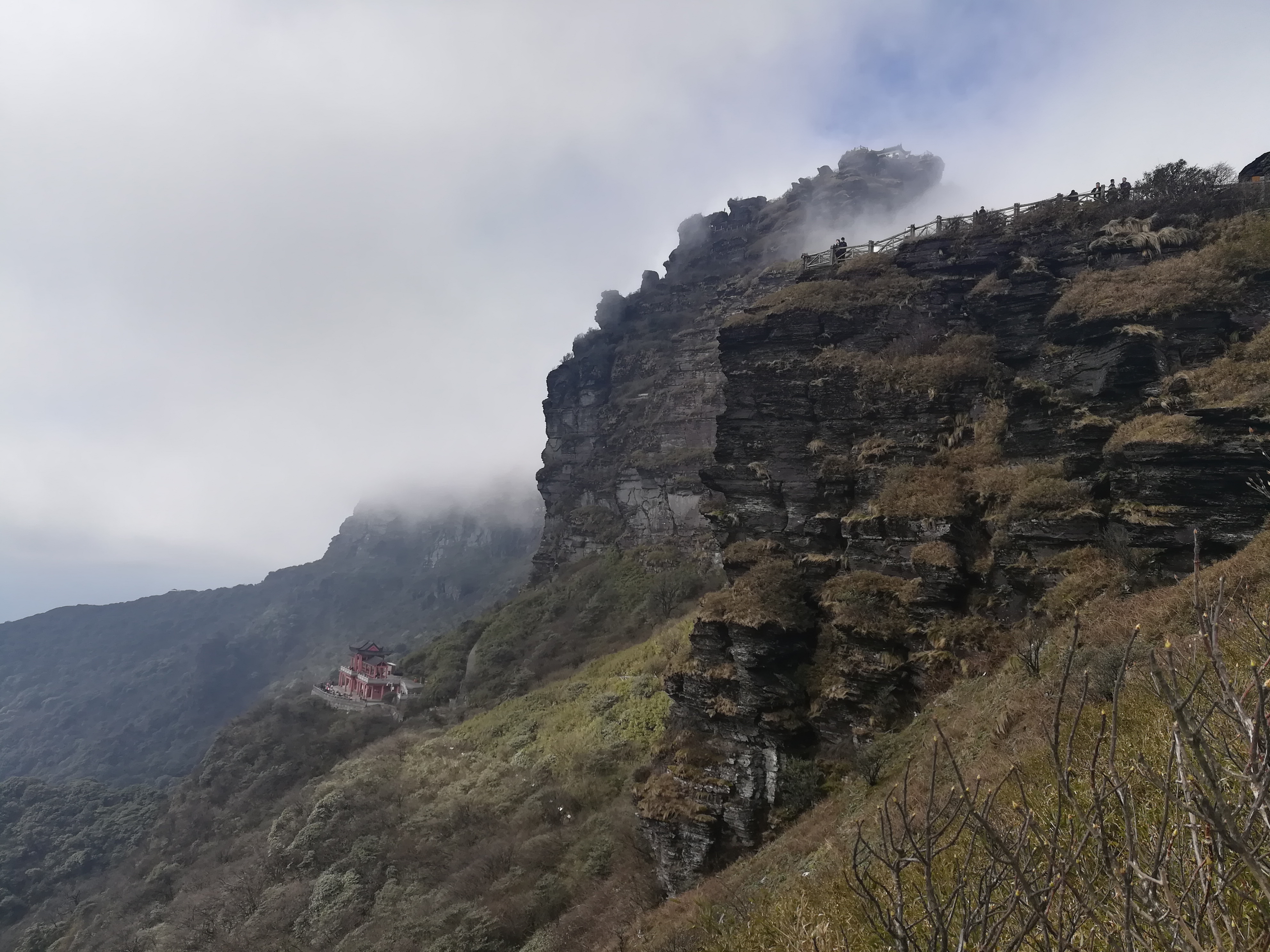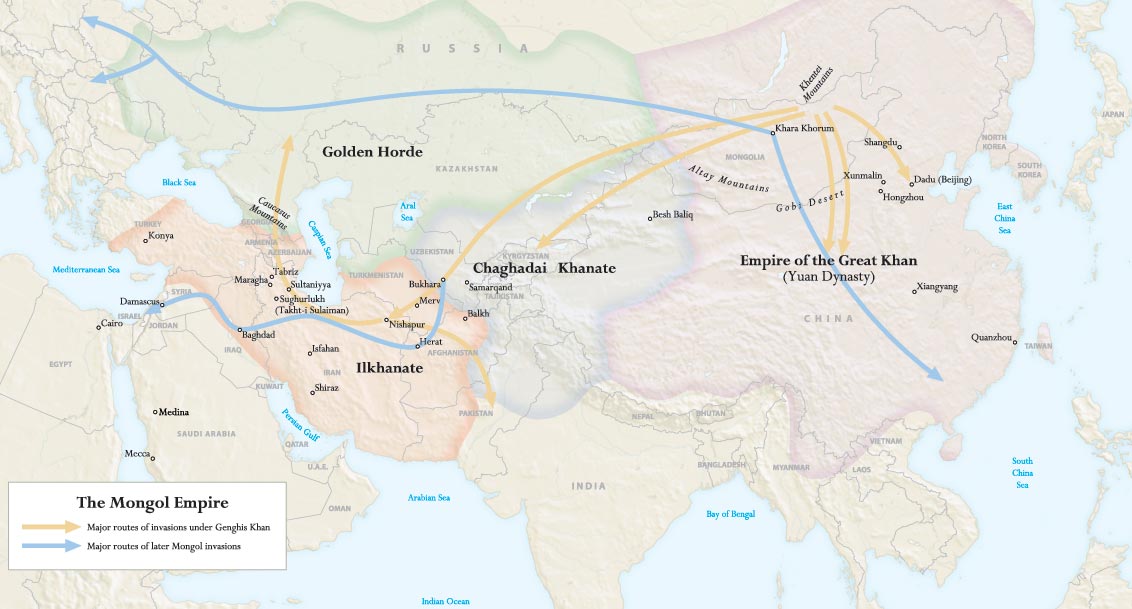|
Fanjingshan
The Fanjingshan () or Mount Fanjing, located in Tongren, Guizhou province, is the highest peak of the Wuling Mountains in southeastern China, at an elevation of . The Fanjingshan National Nature Reserve was established in 1978 and designated a UNESCO Biosphere Reserve in 1986. Fanjingshan is a sacred mountain in Chinese Buddhism, considered to be the bodhimaṇḍa of the Maitreya Buddha. It became a UNESCO World Heritage Site in 2018. Name The mountain's name "Fanjing" is an abbreviation of ''Fantian Jingtu'' (), or "Brahma's Pure Land". ''Fantian'' is the Chinese name for the Buddhist heavenly king Brahmā, and ''Jingtu'' is Chinese for "pure land", the focus of Pure Land Buddhism. Location and environment Fanjingshan is located in Tongren, Guizhou Province in southeastern China. It is the highest peak of the Wuling Mountains. The elevation of its terrain ranges from above sea level. The Fanjingshan National Nature Reserve was established in 1978 and designated a UNES ... [...More Info...] [...Related Items...] OR: [Wikipedia] [Google] [Baidu] |
Guizhou Golden Monkey
The gray snub-nosed monkey (''Rhinopithecus brelichi''), also known as Brelich's snub-nosed monkey, Guizhou snub-nosed monkey, and Guizhou golden monkey, is a species of primate in the family Cercopithecidae. It is endemic to China, where it is known as the Guizhou golden hair monkey (黔金丝猴) or gray golden hair monkey (灰金丝猴). It is threatened by habitat loss. Of the three species of snub-nosed monkeys in China, the gray snub-nosed monkey is the most threatened, with a total population thought to number fewer than 400 individuals. Description Adults are covered with long, fine hair, generally grading from brown on its upper body to gray on its lower body, with a white patch between its shoulder blades. Its head, neck, and ends of its limbs are black, except for a golden brow. It has a golden chest, and chestnut fur on its inner knees and inner sides of its upper arms. Its face is bare bluish-white skin, pink around the eyes and mouth, and has a shelf-like brow and r ... [...More Info...] [...Related Items...] OR: [Wikipedia] [Google] [Baidu] |
Wuling Mountains
The Wuling Mountains () are a mountain range located in Central China, running from Chongqing Municipality and East Guizhou to West Hunan. They are home to many ethnic groups, including as the Tujia, Han, Miao, Dong, and Bai. Wulingyuan The Wulingyuan Scenic and Historic Interest Area is a UNESCO The United Nations Educational, Scientific and Cultural Organization is a specialized agency of the United Nations (UN) aimed at promoting world peace and security through international cooperation in education, arts, sciences and culture. I ... World Heritage Site in the Wuling Mountain Range noted for its more than 3,000 quartzite sandstone pillars and peaks across most of the site, along with many ravines and gorges between them with streams, pools and waterfalls. Fanjingshan Fanjingshan or Mount Fanjing, located in Guizhou province, is the highest peak in the Wuling Mountain range, at an altitude of . The Fanjingshan National Nature Reserve was established in ... [...More Info...] [...Related Items...] OR: [Wikipedia] [Google] [Baidu] |
List Of World Heritage Sites In Eastern Asia
The UNESCO (United Nations Educational, Scientific and Cultural Organization) has designated 99 World Heritage Sites in 5 countries (also called " state parties") of East Asia: China, Mongolia, North Korea, South Korea and Japan. In this region, China is home to the most inscribed sites with number of 55. The first sites from the region (and only sites designated in the 1980s or before) were the Great Wall of China, Mount Tai, the Peking Man Site at Zhoukoudian, Imperial Palace of the Ming and Qing Dynasties, the Mogao Caves and the Mausoleum of the First Qin Emperor, and all of them were in China. Each year, UNESCO's World Heritage Committee may inscribe new sites on the list, or delist sites that no longer meet the criteria. Selection is based on ten criteria: six for cultural heritage (i–vi) and four for natural heritage (vii–x). Some sites, designated "mixed sites," represent both cultural and natural heritage. In Eastern Asia, there are 74 cultural, 21 natural, and ... [...More Info...] [...Related Items...] OR: [Wikipedia] [Google] [Baidu] |
Four Sacred Mountains Of Buddhism
The Sacred Mountains of China are divided into several groups. The ''Five Great Mountains'' () refers to five of the most renowned mountains in Chinese history, and they were the subjects of imperial pilgrimage by emperors throughout ages. They are associated with the supreme God of Heaven and the five main cosmic deities of Chinese traditional religion. The group associated with Buddhism is referred to as the ''Four Sacred Mountains of Buddhism'' (), and the group associated with Taoism is referred to as the ''Four Sacred Mountains of Taoism'' (). The sacred mountains have all been important destinations for pilgrimage, the Chinese expression for pilgrimage () being a shortened version of an expression which means ''"paying respect to a holy mountain"'' (). The Five Great Mountains The ''Five Great Mountains'' or ''Wuyue'' are arranged according to the five cardinal directions of Chinese geomancy, which includes the center as a direction. The grouping of the five mountains ... [...More Info...] [...Related Items...] OR: [Wikipedia] [Google] [Baidu] |
Guizhou
Guizhou (; formerly Kweichow) is a landlocked province in the southwest region of the People's Republic of China. Its capital and largest city is Guiyang, in the center of the province. Guizhou borders the autonomous region of Guangxi to the south, Yunnan to the west, Sichuan to the northwest, the municipality of Chongqing to the north, and Hunan to the east. The population of Guizhou stands at 38.5 million, ranking 18th among the provinces in China. The Dian Kingdom, which inhabited the present-day area of Guizhou, was annexed by the Han dynasty in 106 BC. Guizhou was formally made a province in 1413 during the Ming dynasty. After the overthrow of the Qing in 1911 and following the Chinese Civil War, the Chinese Communist Party took refuge in Guizhou during the Long March between 1934 and 1935. After the establishment of the People's Republic of China, Mao Zedong promoted the relocation of heavy industry into inland provinces such as Guizhou, to better prot ... [...More Info...] [...Related Items...] OR: [Wikipedia] [Google] [Baidu] |
List Of World Heritage Sites By Year Of Inscription
This is a list of the UNESCO World Heritage Sites around the world by year of inscription, selected during the annual sessions of the World Heritage Committee. The first World Heritage Site in the list is the Galápagos Islands. The 24th session in 2000 inscribed the most with 61 entries, while the 13th session in 1989 only inscribed seven sites. (F) denotes a country's first inscription. 1978 (2nd session) 12 sites (8 cultural, 4 natural)Host: 1979 (3rd session) 45 sites (34 cultural, 8 natural, 3 mixed)Host: 1980 (4th session) 27 sites (22 cultural, 5 natural)Host: 1981 (5th session) 26 sites (15 cultural, 9 natural, 2 mixed)Host: 1982 (6th session) 24 sites (17 cultural, 5 natural, 2 mixed)Host: 1983 (7th session) 29 sites (19 cultural, 9 natural, 1 mixed)Host: 1984 (8th session) 22 sites (15 cultural, 7 natural)Host: 1985 (9th session) 30 sites (25 cultural, 4 natural, 1 mixed)Host: 1986 (10th session) 29 sites (23 cultural, 5 natural, 1 mixed)Host: ... [...More Info...] [...Related Items...] OR: [Wikipedia] [Google] [Baidu] |
Ming Dynasty
The Ming dynasty (), officially the Great Ming, was an Dynasties in Chinese history, imperial dynasty of China, ruling from 1368 to 1644 following the collapse of the Mongol Empire, Mongol-led Yuan dynasty. The Ming dynasty was the last orthodox dynasty of China ruled by the Han Chinese, Han people, the majority ethnic group in China. Although the primary capital of Beijing fell in 1644 to a rebellion led by Li Zicheng (who established the short-lived Shun dynasty), numerous rump state, rump regimes ruled by remnants of the House of Zhu, Ming imperial family—collectively called the Southern Ming—survived until 1662. The Ming dynasty's founder, the Hongwu Emperor (r. 1368–1398), attempted to create a society of self-sufficient rural communities ordered in a rigid, immobile system that would guarantee and support a permanent class of soldiers for his dynasty: the empire's standing army exceeded one million troops and the naval history of China, navy's dockyards in Nanjin ... [...More Info...] [...Related Items...] OR: [Wikipedia] [Google] [Baidu] |
Qing Dynasty
The Qing dynasty ( ), officially the Great Qing,, was a Manchu-led imperial dynasty of China and the last orthodox dynasty in Chinese history. It emerged from the Later Jin dynasty founded by the Jianzhou Jurchens, a Tungusic-speaking ethnic group who unified other Jurchen tribes to form a new "Manchu" ethnic identity. The dynasty was officially proclaimed in 1636 in Manchuria (modern-day Northeast China and Outer Manchuria). It seized control of Beijing in 1644, then later expanded its rule over the whole of China proper and Taiwan, and finally expanded into Inner Asia. The dynasty lasted until 1912 when it was overthrown in the Xinhai Revolution. In orthodox Chinese historiography, the Qing dynasty was preceded by the Ming dynasty and succeeded by the Republic of China. The multiethnic Qing dynasty lasted for almost three centuries and assembled the territorial base for modern China. It was the largest imperial dynasty in the history of China and in 1790 ... [...More Info...] [...Related Items...] OR: [Wikipedia] [Google] [Baidu] |
Bozhou Rebellion
The Bozhou rebellion () was a Miao uprising that occurred in Guizhou and spread to Sichuan and Huguang between 1589 and 1600 during the Ming dynasty. Events In 1589, the Bozhou Tusi region (Zunyi, Guizhou) erupted into inter-tribal warfare between seven tusi chiefdoms. The war coalesced into a full scale rebellion with one of the tusi chieftains, Yang Yinglong, at its head, and spread to Sichuan and Huguang where they engaged in widespread looting and destruction. In 1593 the Wanli Emperor offered Yang Yinglong amnesty if he led his army in the war effort against the Japanese invasion of Joseon. Yang Yinglong agreed to the proposition and was half way to Korea before the Japanese withdrew (only to attack again the following year). Yang returned to Guizhou where Sichuan's grand coordinator Wang Jiguang called for him to stand trial in court. Yang did not comply and in 1594 local Ming forces attempted to quell the situation but were defeated in battle. By 1598 Yang's rebel ... [...More Info...] [...Related Items...] OR: [Wikipedia] [Google] [Baidu] |
Yuan Dynasty
The Yuan dynasty (), officially the Great Yuan (; xng, , , literally "Great Yuan State"), was a Mongols, Mongol-led Dynasties in Chinese history, imperial dynasty of China and a successor state to the Mongol Empire after Division of the Mongol Empire, its division. It was established by Kublai Khan, Kublai, the fifth khagan-emperor of the Mongol Empire from the Borjigin clan, and lasted from 1271 to 1368. In orthodox Chinese historiography, the Yuan dynasty followed the Song dynasty and preceded the Ming dynasty. Although Genghis Khan had been enthroned with the Han Chinese, Han-style title of Emperor of China, Emperor in 1206 and the Mongol Empire had ruled territories including modern-day Northern and southern China, northern China for decades, it was not until 1271 that Kublai Khan officially proclaimed the dynasty in the traditional Han style, and the conquest was not complete until 1279 when the Southern Song dynasty was defeated in the Battle of Yamen. His realm was, ... [...More Info...] [...Related Items...] OR: [Wikipedia] [Google] [Baidu] |
Song Dynasty
The Song dynasty (; ; 960–1279) was an imperial dynasty of China that began in 960 and lasted until 1279. The dynasty was founded by Emperor Taizu of Song following his usurpation of the throne of the Later Zhou. The Song conquered the rest of the Ten Kingdoms, ending the Five Dynasties and Ten Kingdoms period. The Song often came into conflict with the contemporaneous Liao, Western Xia and Jin dynasties in northern China. After retreating to southern China, the Song was eventually conquered by the Mongol-led Yuan dynasty. The dynasty is divided into two periods: Northern Song and Southern Song. During the Northern Song (; 960–1127), the capital was in the northern city of Bianjing (now Kaifeng) and the dynasty controlled most of what is now Eastern China. The Southern Song (; 1127–1279) refers to the period after the Song lost control of its northern half to the Jurchen-led Jin dynasty in the Jin–Song Wars. At that time, the Song court retreated south o ... [...More Info...] [...Related Items...] OR: [Wikipedia] [Google] [Baidu] |
Tang Dynasty
The Tang dynasty (, ; zh, t= ), or Tang Empire, was an imperial dynasty of China that ruled from 618 to 907 AD, with an interregnum between 690 and 705. It was preceded by the Sui dynasty and followed by the Five Dynasties and Ten Kingdoms period. Historians generally regard the Tang as a high point in Chinese civilization, and a golden age of cosmopolitan culture. Tang territory, acquired through the military campaigns of its early rulers, rivaled that of the Han dynasty. The Lǐ family () founded the dynasty, seizing power during the decline and collapse of the Sui Empire and inaugurating a period of progress and stability in the first half of the dynasty's rule. The dynasty was formally interrupted during 690–705 when Empress Wu Zetian seized the throne, proclaiming the Wu Zhou dynasty and becoming the only legitimate Chinese empress regnant. The devastating An Lushan Rebellion (755–763) shook the nation and led to the decline of central authority in the dynas ... [...More Info...] [...Related Items...] OR: [Wikipedia] [Google] [Baidu] |





